As part of a comprehensive climate risk analysis, the Federal Office for the Environment documented the climate-related risks and opportunities for the six major regions of Jura, Swiss Plateau, Foothills of the Alps, Alps, South of the Alps and large urban zones and published them in 2017. Depending on the region, different priorities emerge as to the effects of climate change.

The risks and opportunities per major region were examined through eight case studies (see: additional literature). The statements below on climate-related risks, on the one hand, describe where there is a need for action or what can be expected if no adaptation measures are taken. Appropriate precautionary measures can reduce at least some of these risks. On the other hand, climate change presents various opportunities. In numerous cases, the associated potentials for society, the economy and the environment can be actively shaped and used.
Risks and opportunities that are of great importance to all parts of the country
The risks relevant throughout Switzerland are
- increasing health-related problems as the result of heat waves and new or increased allergies, disease carriers and infectious diseases
- more frequent situations of water scarcity
- increasing energy needs for cooling with simultaneously reduced production of hydropower plants in the summer months
- increasing risk of property damage and personal injury due to flooding, debris flows, rock fall, rock avalanche or landslides
These risks also present opportunities across the country
- fewer illnesses associated with cold weather
- decrease in snow- and ice-related personal and property damage
- decreasing heating needs in winter
Certain impacts cannot clearly be classified as risks or opportunities. This relates in particular to
- changes in the natural conditions for animals, plants, mushrooms and micro-organisms with impacts on ecosystems, species composition and genetic diversity
- storm and hail damage, for which it is still unclear, whether an increase or decrease is to be expected as the result of
climate change
Additional risks and opportunities-areas of focus in the individual major regions
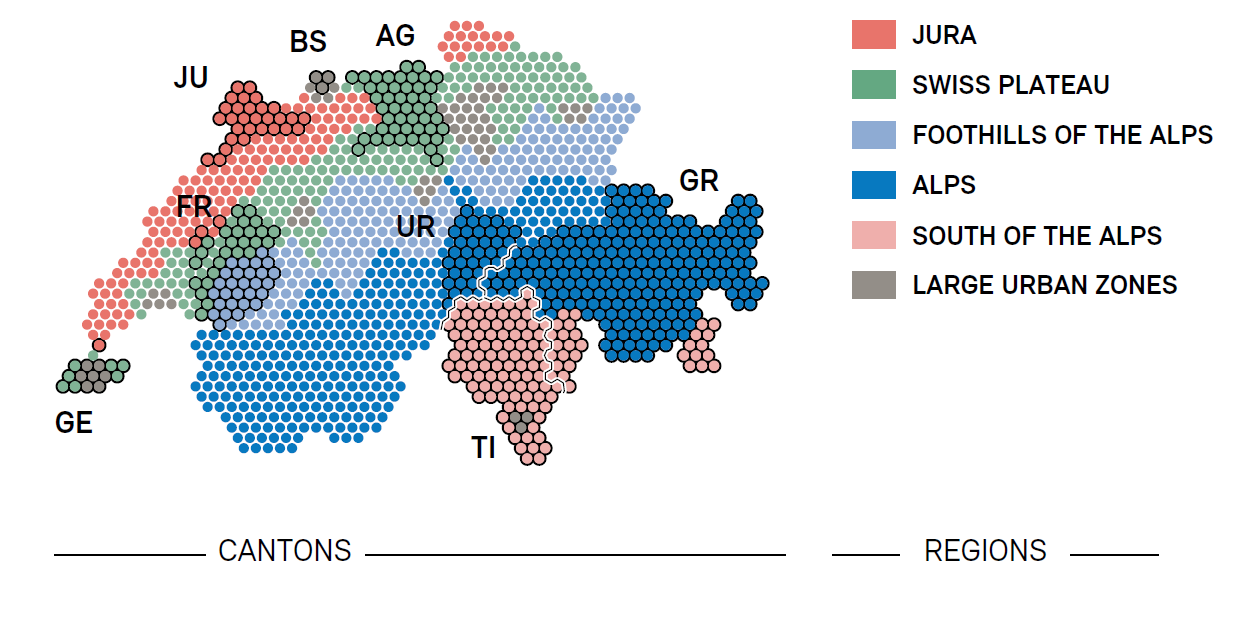
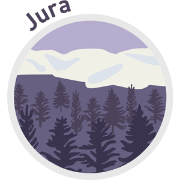
The major region Jura is particularly sensitive to drought. This has a negative impact on agriculture and increases the risk of forest fire. Higher temperatures promote the spread of harmful organisms, which in the Jura especially affects forest health and wood quality. At the same time, the increase in temperature could lead to higher yields in agriculture. With rising temperatures, a positive effect is also to be expected for summer tourism: As the summer season lasts longer and higher, cooler locations become more attractive as recreation areas.
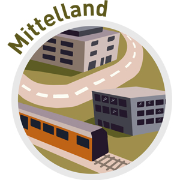
In the Swiss Plateau, maximum temperatures reach above-average values. Because both population and job density are also relatively high here, reduced work efficiency intensifies. Animals in this region are also particularly affected by high temperatures. In addition, harmful organisms multiply more under such
conditions, resulting in losses in agriculture and forestry. On the side of opportunities, it should be emphasized that the longer growth period offers the prospect of higher agricultural yields in the region.
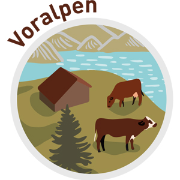
In the Foothills of the Alps, the rise in temperature causes the starting position for winter sports resorts to deteriorate significantly. At the same time, this region is one of the areas that benefits from more attractive conditions for summer tourism. Even agriculture in the Foothills of the Alps is one of the beneficiaries, thanks to longer summers. On the other hand, the vitality of forests in the Foothills of the Alps is increasingly impaired by periods of prolonged drought, which promotes pest infestation and reduces the productive and protective function of the forest.
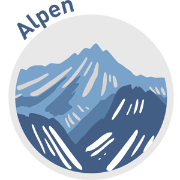
Only in the highest areas of the Alpine region could the conditions for winter tourism remain favourable over the longer term. Lower-altitude areas will suffer from decreasing snow security. For them, there are new opportunities in summer tourism. The shorter snow cover also improves the conditions for using the sun as an energy source. Challenges arise in the mountains due to natural hazards, which are related to the rising permafrost boundary. At the same time, the protective forests are exposed to an increasing forest fire risk, especially in the inner Alpine valleys.
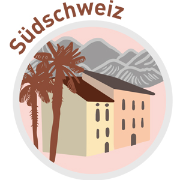
The region South of the Alps is already characterized by high temperatures. As a result, wellbeing at work and in in leisure time is impaired and the occurrence of new disease carriers (e.g., mosquitoes) is promoted. These risks are likely to worsen in the future. Drought is also a challenge that will affect the
region South of the Alps even more than before. On the one hand, this affects the danger of large-scale forest fires. On the other hand, it leads to restrictions in the use of water, for example for energy production.
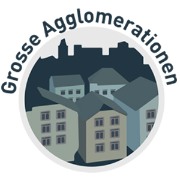
For densely built-up large urban zones, where the limited air circulation strongly influences the temperature balance, further increasing average and maximum temperatures are a particularly big challenge. This not only affects human health and workplace performance, , but also the green spaces that are important for urban quality of life. The increasing demand for cooling energy stands in contrast to the generally unfavourable conditions for energy production from hydropower in the summer.
Further informations
Links
Literature
Case study: Major region Jura
Case studies: Major region Swiss plateau
- Anpassung an den Klimawandel im Bereich Biodiversität im Kanton Aargau (PDF, 4 MB, 12.05.2016)Schlussbericht, econcept
- Risiken und Chancen des Klimawandels im Kanton Freiburg (PDF, 6 MB, 17.12.2015)Im Auftrag des BAFU (deutsch, französisch)
- Risiken und Chancen des Klimawandels im Kanton Aargau (PDF, 5 MB, 30.06.2013)Ergebnisbericht, im Auftrag des BAFU.
- Irrigation Seeland-Broye - Prévision online des besoins et ressources en eau pour l'irrigation (PDF, 2 MB, 01.06.2016)Pro Agricultura Seeland, e-dric & Agroscope
- AG Klimastrategie Teil I -- Klimakompass (PDF, 5 MB, 09.09.2021)Erster Teil der Aargauer Klimastrategie
- Irrigation Seeland-Broye - Info Ländliche Entwicklung (PDF, 517 kB, 29.06.2016)
- Bewässerungsgesellschaft Broye-Ebene: Faktenblatt (PDF, 128 kB, 22.12.2011)
Case study: Major region Prealps
- Risiken und Chancen des Klimawandels im Kanton Freiburg (PDF, 6 MB, 17.12.2015)Im Auftrag des BAFU (deutsch, französisch)
- Irrigation Seeland-Broye - Prévision online des besoins et ressources en eau pour l'irrigation (PDF, 2 MB, 01.06.2016)Pro Agricultura Seeland, e-dric & Agroscope
- Irrigation Seeland-Broye - Info Ländliche Entwicklung (PDF, 517 kB, 29.06.2016)
- Bewässerungsgesellschaft Broye-Ebene: Faktenblatt (PDF, 128 kB, 22.12.2011)
Case studies: Major region Alps
- AquaFutura - Regionales Wassermanagement im Parc Ela (PDF, 3 MB, 10.01.2017)Im Auftrag des BAFU
- Wasserknappheitshinweiskarten Einzugsgebiet Vierwaldstättersee - Schlussbericht (PDF, 5 MB, 17.06.2017)Aufsichtskommission Vierwaldstättersee (AKV)
- Klima-Toolbox Surselva Methodenbericht (PDF, 350 kB, 10.01.2017)Im Auftrag des BAFU
- Klimabedingte Risiken und Chancen 2060 - Regionale Fallstudie Kanton Uri (PDF, 7 MB, 27.03.2015)Im Auftrag des BAFU
- Vorkommen, Ökologie und Kontrolle von Götterbäumen in der Schweiz - Zusammenfassung (PDF, 292 kB, 06.10.2017)Eidg. Forschungsanstalt für Wald, Schnee und Landschaft WSL
- Bodenfeuchtemonitoring mit Informationssystem - Schlussbericht (PDF, 8 MB, 25.01.2017)inNET Monitoring AG
- Klima-Toolbox Surselva (PDF, 6 MB, 10.01.2017)Im Auftrag des BAFU
- Quellen Nachrichten - Empfindlichkeit von Quell-Lebensgemeinschaften gegenüber Klimaveränderungen (PDF, 1 MB, 15.05.2016)AG Schutz der Quell-Lebensräume
- Empfindlichkeit von Quell-Lebensgemeinschaften gegenüber Klimaveränderungen in den Alpen - Schlussbericht (PDF, 5 MB, 18.09.2016)AG Schutz der Quell-Lebensräume
- Klimawandel Graubünden - Analyse der Risiken und Chancen (PDF, 1 MB, 23.11.2015)Im Auftrag des Amtes für Natur und Umwelt (ANU) Kanton Graubünden, mit Unterstützung des BAFU
Case study: Major region south Swiss
- Klimabedingte Risiken und Chancen: Fallstudie Kanton Tessin (PDF, 38 MB, 01.06.2016)Im Auftrag des BAFU
- Effekt von Hitzeperioden auf die Sterblichkeit und Evaluation von Adaptationsmassnahmen zwischen 1995 und 2013 - Zusammenfassung (PDF, 394 kB, 25.09.2017)Schweizerisches Tropen- und Public Health-Institut
- Vorkommen, Ökologie und Kontrolle von Götterbäumen in der Schweiz - Zusammenfassung (PDF, 292 kB, 06.10.2017)Eidg. Forschungsanstalt für Wald, Schnee und Landschaft WSL
- Neuausrichtung Tourismus Monte Tamaro: Faktenblatt (PDF, 111 kB, 22.12.2011)
Case studies: Big agglomerations
- Analyse klimabedingter Risiken und Chancen in der Schweiz - Regionale Fallstudie Kanton Basel-Stadt (PDF, 2 MB, 22.06.2015)Im Auftrag des BAFU
- Etablissement et optimisation d’un réseau de surveillance des ennemis des plantes cultivées émergents dans un contexte de changements climatiques - rapport final (PDF, 8 MB, 03.12.2016)hepia
- Analyse des Risques et Opportunités liés aux changements climatiques en Suisse - Etude de cas Canton Genève et Grand-Genève (PDF, 6 MB, 10.11.2015)Sur mandat de l'OFEV (en francais)
- La punaise diabolique - Fiche (PDF, 998 kB, 15.12.2017)hepia
- La punaise verte du_soja - Fiche (PDF, 901 kB, 01.03.2017)hepia
Last modification 20.07.2023
Contact
Federal Office for the Environment FOEN
Climate Reporting and Adaptation
Papiermühlestr. 172
3063 Ittigen





